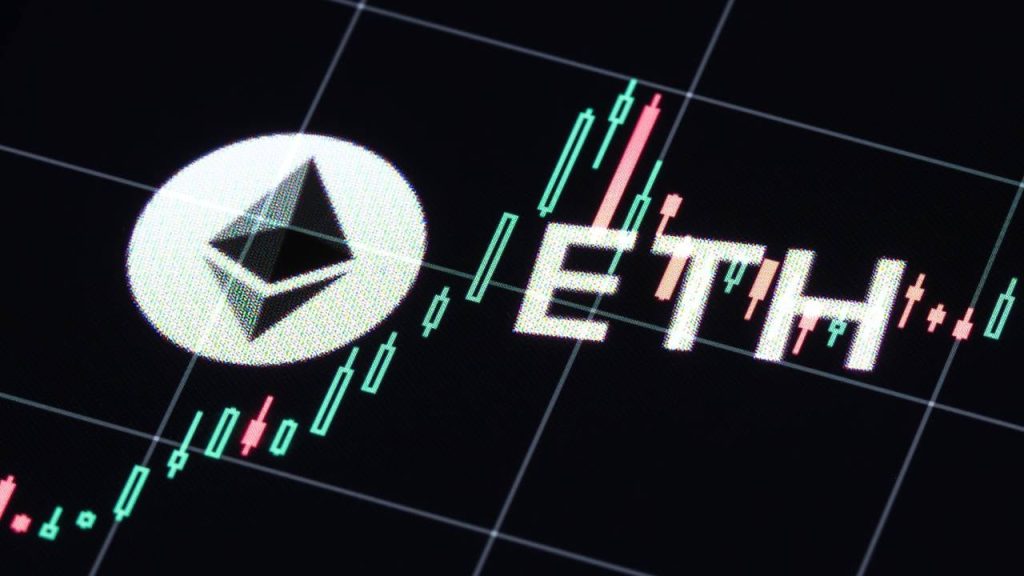Like many cryptocurrencies, Ethereum has been tremendously volatile since its inception on July 30, 2015. But apart from the first few months while it was gaining its following, the price has moved higher — tremendously higher — over time. Following years behind Bitcoin and its massive price rise, Ethereum has become the second-largest cryptocurrency by total value.
Ethereum has become one of the most popular cryptocurrencies, noted for its use in “smart contracts” that are self-executed when pre-specified conditions are met. The crypto’s intense price volatility has also made it a popular trading vehicle, helping deft traders make plenty of money, though plenty of them would have done fine holding — or HODLing, as crypto fans say.
Despite the long-term gain, Ethereum has had substantial periods where it’s lost significant value. The price was obliterated in 2018 — losing 82 percent — following a massive run-up the year before when crypto went mainstream. And it didn’t fare so hot in 2022, either, as rising interest rates pummeled risk assets such as cryptocurrency and high-growth stocks.
Ethereum is the brainchild of programmer Vitalik Buterin, who along with others began development on the crypto project in 2014. Ethereum is perhaps best known for its smart contracts, but it also allows users to create and trade non-fungible tokens (NFTs) that are tied to various digital assets such as images and artwork.
While the issuance of Ethereum coins is fixed, there’s literally no limit to the total supply, unlike Bitcoin, which is famously limited to 21 million coins.
Like almost all cryptocurrencies, Ethereum is not backed by any hard assets or cash flow of an underlying entity. Its price is supported only by traders’ sentiment. When traders enter a “greed” or “risk-on” phase, the cryptocurrency has soared. In the “fear” or “risk-off” phase, the coin has plummeted as sellers hit the exits amid anticipated bad news or poor trading conditions.
Here’s how the price of Ethereum has risen and fallen over time as well as some of the trends driving those moves.
2015-2016: Ethereum is launched and draws fans
While Ethereum was launched on July 30, 2015, it’s tough to find pricing on it until a week or so later. The crypto closed that day at a reported $2.77 and then bounced around below $1 for months, as the newly launched digital currency looked for support among crypto fans.
Then to start 2016, the price inched up to $1 per coin, where it closed on Jan. 10 — and then it never looked back. By the end of the month, it had hit more than $2, and then 10 days later it hit $4. March saw the coin trade for more than $10 for most of the month and then consolidated until May, when it broke decidedly above that trading range before spiking above $20 in June.
But the spike was short-lived, and Ethereum fell back to a trading range of $10 to $12 for the next few months. After a brief jump above $14 in September, the cryptocurrency spent the rest of the year in a downtrend closing out 2016 at around $8 — still good for a 754 percent gain on the year.
2017-2019: Ethereum goes mainstream, then hits crypto winter
Cryptocurrency hit the mainstream in 2017, with the broader public suddenly discovering digital currencies, including Bitcoin and Ethereum. This attention led to a huge melt-up in these assets.
Ethereum started the year at less than $10, but by the middle of the year it had soared to well over $300, as traders flocked to the coin. But all that heat needed time to cool off, and less than a month later, Ethereum was back below $200 again. The price needed time to consolidate, and danced between $200 and $400 before settling around $300 in early November.
At this point, crypto fever began sweeping the world in late 2017, and it seemed like the sky was the limit. By late December, Ethereum had barrelled through $800, and just a week into 2018, it surpassed the $1,000 threshold and then a week later, $1,300. The deliriously quick rise acted as its own accelerant, moving the crypto ever higher as more traders rushed to cash in.
But the rest of 2018 was downhill. Ethereum plunged below $400 by the end of March, a stunning decline in less than three months. While it rebounded to more than $800 by early May, the selling pressure was too intense and the rest of the year saw the crypto move sharply lower. Ethereum closed the year at $133 — a gobsmacking 82 percent lower from the year before.
The situation improved by mid-year 2019, with Ethereum peaking around $338 in late June. But from there it trended lower, basically back to where it started the year.
2020-2023: Ethereum soars with low interest rates
After a period of consolidation that saw Ethereum end 2019 basically even with where it started the year, the cryptocurrency went on a strong run in 2020.
Ethereum moved up nicely to start the year, but then like most risk assets such as stocks, it plunged in March with the emergence of the COVID pandemic. As part of the recovery efforts, the Federal Reserve dropped interest rates to near zero and pumped liquidity into the market in other ways, such as by buying debt securities. Those efforts helped juice both the stock market and crypto prices, sending both soaring through 2020 and most of 2021.
In May, China announced that it was cracking down on buyers, but Ethereum mostly shrugged off that news. The country also warned that it was banning financial institutions and payment platforms from using cryptocurrency to conduct business. In September, China announced that all crypto transactions would be considered illegal and that foreign websites offering these services to Chinese investors were against the law. But it didn’t seem to stop Ethereum from powering higher.
Ethereum started 2020 around $130 but seemed to move inexorably higher throughout the year, finishing around $737 — a stunning run in just 12 months.
The first five months of 2021 saw Ethereum continue that impressive run. Just a few days into the new year, it had already surpassed $1,000. By the start of April, it doubled from there to $2,000. By the start of May, Ethereum ran to more than $3,000, and then on May 11 it surpassed $4,000 — spiraling only higher, it seemed. But the run ended there.
Ethereum spent the next two months falling and then consolidating, before ultimately rallying in August and ultimately peaking at more than $4,800 in early November. The Federal Reserve indicated its intention to soon raise interest rates and otherwise remove liquidity from the system, leading to a fierce sell-off of both stocks and the highly speculative crypto market.
In August, Ethereum also implemented a change that saw the crypto begin to “burn” a portion of the transaction fees on its network, permanently destroying them. The move helped make the crypto more deflationary, supporting its price over the longer term. Ethereum closed 2021 at just below $3,700, up 399 percent for the year.
Yet, Ethereum spent 2022 in a downturn, despite relief rallies throughout the year, ultimately bottoming near $1,000 in June. The big news this year was the so-called Ethereum Merge, the crypto’s move from a “proof-of-work” system to a more efficient “proof-of-stake” system.
The crypto coin finished the year down some 67 percent, closing at $1,196. The Fed raised interest rates furiously through much of the year, and high-profile blow-ups such as at crypto exchange FTX pummeled investors’ confidence.
Ethereum rallied strongly in 2023, as it became clearer that the future path of interest rates would be less severe than anticipated. Despite an SEC crackdown on exchanges such as Binance and Coinbase, Ethereum rallied for much of the year, though it hit a rough patch in August. But by October, it was moving higher as the Fed began to indicate that the path of interest rates was lower, before ending the year at nearly $2,300 — up 91 percent for the year.
2024: Ethereum ETFs are approved
While the price of Ethereum was already on the upswing in 2023, it got a further boost in early 2024, following the approval of Bitcoin ETFs in January 2024. This approval opened the possibility that Ethereum ETFs would also be a possibility, and the crypto coin rallied.
In late May, the SEC approved Ethereum spot ETFs in principle, paving the way for them to be traded on the New York Stock Exchange or Nasdaq.
Ethereum returns by year
| Year | Return |
|---|---|
| 2015 | N/A |
| 2016 | 754% |
| 2017 | 9,395% |
| 2018 | -82% |
| 2019 | -2% |
| 2020 | 466% |
| 2021 | 399% |
| 2022 | -67% |
| 2023 | 91% |
| 2024 (YTD) | 53% |
Source: Data from CoinLore
Editorial Disclaimer: All investors are advised to conduct their own independent research into investment strategies before making an investment decision. In addition, investors are advised that past investment product performance is no guarantee of future price appreciation.
Read the full article here
















